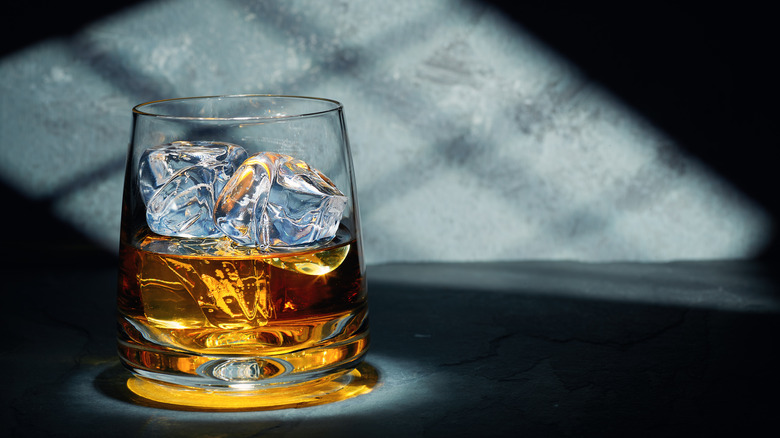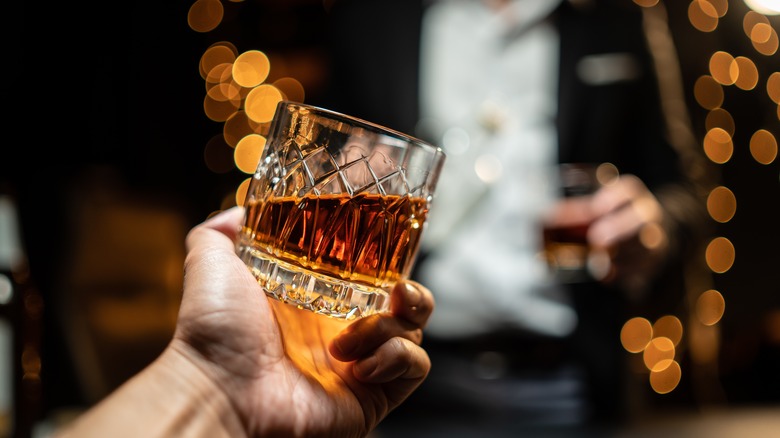What Chill Filtration Means And Why It Matters When Making Whiskey
Like most things in life, making whiskey is full of compromises. One particular compromise that distilleries have to make is the process known as chill filtration; there's no avoiding this dilemma. Chill filtration is the process of cooling whiskey down below freezing and then passing it through a filter, which gets rid of a lot of impurities in the liquid. The impurities include things like proteins, esters, sediment, and fatty acids, most of which come from the whiskey's time spent in the barrel. Everything that gets filtered out is perfectly safe to consume, so there's no real risk in not chill-filtering whiskey.
The decision to chill-filter whiskey revolves exclusively around aesthetics, but it isn't as straightforward as saying chill-filtered whiskey looks better. If you pour yourself a glass of whiskey that hasn't been chill-filtered and you cool it down, say with an ice cube, you're likely to notice that the whiskey takes on a cloudy look. That's due to all those impurities we mentioned. Distilleries want whiskey to look clean, so to keep the whiskey from clouding over when cold, they chill-filter the product prior to bottling. It's not unlike other tactics that distilleries use to create a consistent quality product.
What's the big deal?
Chill-filtered whiskey is not universally loved. Some people likely don't care either way (maybe even most people), but there's a vocal contingency within the whiskey world who would prefer that chill filtration went the way of the dodo. Their claim is that chill filtration sacrifices flavor in return for a barely noticeable change in how a whiskey looks. The extent to which this is true is up for debate, but it does have at least some truth to it. Chill-filtered whiskey often tastes thinner and loses a lot of the unique flavor notes it had gathered over the long period of time it matured in the barrel.
It begs the question: Why bother keeping whiskey in a new oak barrel for six years if you're just going to turn around and filter out everything it gained from that process? But of course, it doesn't filter out every last thing. Whiskey goes into the barrel perfectly clear, and chill-filtered whiskey is still a nice amber color, even if it isn't as dark an amber as it could be otherwise.
Despite these objections, chill filtration is likely here to stay. Distilleries are almost certainly aware of the objections, and some choose not to chill-filter whiskeys to accommodate these concerns. But, there are just as many whiskey drinkers who don't mind the taste of chill-filtered whiskey — if they notice the difference at all — and certainly plenty of others who prefer it.

